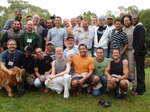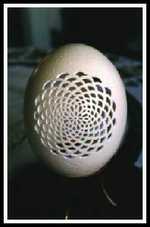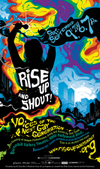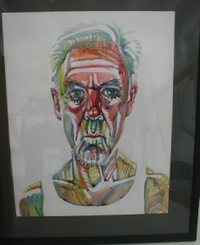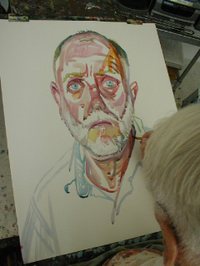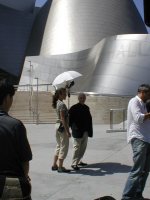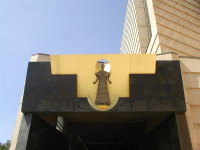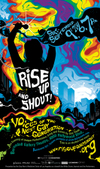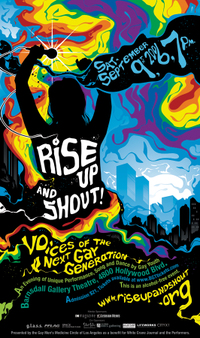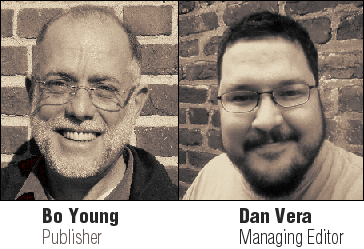My…haven’t we all been busy lately!? I’ve been trying to set down my thoughts on the most recent activities in which I participated and for which White Crane is a sponsor. Just a little over a year ago, I sat down with Eric Rofes to go over what turned out to be one of his last published articles, Gay Bodies, Gay Selves: Understanding the Gay Men’s Health Movement. Eric was one of those people who simply brimmed with ideas, and out of this conversation grew a new formulation of his Gay Men’s Health Summits that he wanted to call Gay Men’s Leadership Academy.
The more we talked, the more we realized that his definition of "health" was nearly identical to White Crane’s definition of the term "spirituality." And so the White Crane Gay Men’s Leadership Academy was born. As usual, Eric called in all of the talent he knew….Chris Bartlett and Kevin Trimmel Jones from Philadelphia…T. Scott Pegues from Denver…and they got started. Good thing that was how Eric did things, because half way between the first Academy (attended by 35 amazing men at the Wildwood Retreat in Guerneville, CA) Eric dropped dead of a heart attack.
But because of his brilliant way of delegating and organizing, this group never dropped a stitch (Chris, honey…that reference was for you, my sweet-faced knitter!)…The second Academy was equally well-attended by equally amazing men of every age, race and stripe, from Boston, Providence, New York City, Albany and Philadelphia.
Somewhere, Eric was smiling.
The idea always was to create an opportunity for leaders working in gay men’s health, to meet other leaders…from as broad a spectrum of fields as we could imagine and attract. The idea was to stretch, challenge and stimulate…to move people out of the old boxes of thinking, particularly the way of thinking of gay people in troubled, pathological terms…in HIV terms…in addiction terms. In what I personally think of as Stockholm Syndrome terms of attempting to show straight society that "we’re just like you except for what we do in bed"…when the bedroom is probably the only place we have in common. How do gay people begin to celebrate and embrace their unique differences, their healthy, different perspective on things? And how, as leaders, do we demonstrate what a valuable contribution to society, not hat in hand, but proudly showing off our "healthy psychic drag"!!!
This wasn’t Eric’s phrasing, but it comes to mind, again and again for me, and it seems clear to me that what we were asking anyone who was inspired to attend:
Who would we be without the struggle?
How might we be without a struggle?
How do we formulate what a healthy life is for gay people? What are the markers and milestones from which we might build and measure a healthy life as GLBT people? These are questions White Crane has been asking for almost two decades. These leaders gathered to continue that discussion.
When it is a given that perhaps 10% of our brothers and sisters may be struggling with HIV or methamphetamine addiction, doesn’t this necessarily mean that 90% of our brothers and sisters are leading lives of quiet — but healthy — isolation? How do we connect? How do we build on this? How do we capitalize on what Eric (and Chris and Scott and Kevin) term an "asset-based," rather than deficit-based, way of thinking? Is methamphetamine really worthy of being called "an epidemic"? Sure it’s a problem for some people…so is smoking in the gay community. There are probably a lot of people for whom sexual addiction and drinking are problems, too. But are we being stampeded into a panic? Is the fear-mongering that we see in the news on a nightly basis, being used to keep us as a community off balance? Is it possible that by strengthening areas where we are successful, healthy individuals as a whole, that this will redound to those members of our community who need help?
Is there a healthy forest beyond the pathological trees? Just asking…
These were just some of the questions that inspired this undertaking. I was unable to attend the first of the Academies in Guerneville, but was able to get to Easton Mountain for the second.
First of all, what a wonderful place! If you haven’t gone to Easton Mountain,either for a workshop or a personal retreat, please do. Check out their programming. This is a marevelous asset in the community, run by a community of men with a really big vision of health, spirit and community. 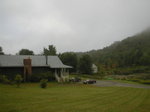
For four days, absolutely wonderfully intelligent, sensitive and imaginative men…ranging in age from early 20s to late 50s…gold to gray…black to brown to yellow to pink… African-American, Asian, Latino, Caucasian…if anyone was left out it wasn’t from lack of trying to be as inclusive as possible…got to know one another, shared, confronted and otherwise debated, demanded and decided. Exercises in expanding thinking and challenges to old thinking were interspersed with and nourished by incredible meals in the idyllic setting that is Easton Mountain.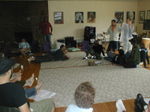
What did we learn? What did we decide? In all honesty I would have to say the answers to these reasonable questions are still formulating in my mind. I look forward to hearing from the colleagues I made that weekend. I know for certain that White Crane will continue with the Academy, on both coasts, with Chris and Scott and Kevin….and David A. and Tauheed Z. and Steven B., Pablo C., Matty H., Andres H., Tim C., Michael M., Marc M., Harlan S., Angel O., Eric K., Chris M., Bill J, Fred L., Brandon A., Peter L., Nayck F., Dennis H., Rexaford D, William K., and Michael D. Thanks gentlemen, for an amazing weekend.
A word on the "age range" mentioned above…as well as the focus on "health." I know of at least one, esteemed leader in the arts community here in NYC who opted not to attend because he felt he might be "too old." And I think he was struggling with how to connect his expertise in the field of theater and arts with the stated purpose of "gay men’s health."
This was a pity…and I plan on continuing the conversation with this friend. Because it was the very differences he would have brought to this weekend that would have made his contribution unique, interesting and valuable. Remember, the intent was to break out of the old boxes of thinking. So the differences of age, race and areas of expertise could only add to the mix and make it richer. A good deal of time was spent even defining the term "leader." Old accepted definitions were challenged, reexamined and, I think, a new seed of an idea… about how to lead, and who leads, and where we might be being lead…was planted. I mentioned that Eric’s definition of "health" was the same as our definition of "spiritual." That is to say, it is anything that provides you with, and nurtures in you, a deeper relationship with yourself, your community and the world. It is consciousness…of yourself, your community, the world. It is a form of "deep ecology." 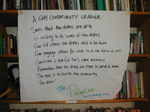
The plan is to continue. A Gay Men’s Health Yahoo! group has been set up for attendees to continue the conversation…to continue the network…to plan for next year’s Gay Men’s Leadership Academy (coming soon to a link near you!).
We hope you think about coming. We hope you come.
